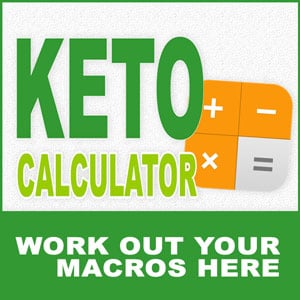 Just what are macros? Short for macronutrients the word gets thrown around everywhere when it comes to diet and nutrition.
Just what are macros? Short for macronutrients the word gets thrown around everywhere when it comes to diet and nutrition.
You’ll find macros referred to in nutritional information, health, diet and exercise books, by dieticians, doctors and fitness experts.
The great part about macronutrients is that they’re not so vast and complex as micronutrients.
Macronutrients, put simply, are, the parts of food that we require in large portions for energy, growth and basic survival.
What Are Macros?
It’s pretty simple really. There are three types of macronutrient and I’m pretty certain you’ve heard of them all.
So what are the three macros? Drumroll, please! The three macronutrients are carbohydrates, protein and fats.
Each macronutrient contains a certain amount of energy and works in different ways within the body.
Macronutrients must be obtained through diet as the body does not make it’s own.
Where the difficulty comes for most dieters is partitioning. Macronutrient should be consumed in percentage portions for optimal health benefits.
The Three Macros
You should not only know what macronutrients are in general. But know what types of macros there are and what their functions are for getting your diet right.
- Carbohydrates – Carbs are the most readily available source of fuel out of the three macros. Typical carbohydrates are sugar, grains, starch, fibre etc, found in bread, fruit, candy etc. When consumed your body will use carbs as its prefered fuel source.
- Protein – is the macronutrient that we need for growth and repair. Protein contains and is broken down into amino acids when metabolised. You get high amounts of protein, from meats, dairy, nuts and seeds.
- Fat – Has an undeserved bad reputation. An essential macronutrient fat is good for your health. Fat is a better, longer lasting source of energy than carbohydrates. You get healthy fats from meats, nuts, eggs, avocados etc.
When consuming fats, know the difference between good fats vs bad fats.
Measuring Your Macros
Like we touched on earlier, partitioning your macros into percentages of your total daily intake (depending on your diet) is important. For instance, the ketogenic diet is broken up like this: 5% Carbohydrate, 20-25% Protein, 70-75% Fat.
Each macronutrient contains a certain amount of calories per gram:
- Carbohydrates – 1g = 4cal
- Protein – 1g = 4cal
- Fat – 1g =9g
Use our keto calculator to calculate your daily macronutrients depending on your goal and size.
Macronutrient – Carbohydrate
Sugars, starches and fibre are carbohydrates, they’re found in fruits naturally, vegetables, dairy nuts and grains.
When fed the human body reaches for the macronutrient, carbohydrates first as a source of energy.
High carbohydrate diets are responsible for high blood sugar levels and the insulin resistance epidemic.
The effects of simple carbohydrates have been likened to the effects that narcotics have on the brain aka, the “sugar-high”.
Research into low-carb, high-fat diets indicates that the human body can live without the macronutrient carbohydrates.
Not only that but the body performs better without (or at very low levels) of carbs.
People who do a ketogenic diet properly will attest to the benefits of limiting carbs to a very low percent of your daily macros.
Macronutrient – Protein
The bodies building block macro, protein is essential for growth.
Protein is responsible for feed in muscles and maintaining lean mass.
This macro also has various functions within the immune system.
Protein is made up of a bunch of organic compounds called amino acids.
Amino acids that are metabolised from protein have certain roles in the production of chemicals that feed the brain and nervous system.
Protein should be kept at a ratio of 20% to max 30% (30% for very active people).
Too much protein is bad for ketosis and can actually spike insulin.
Macronutrient – Fat (Lipids)
When it comes to macronutrients and which macro you should get the most of on a ketogenic diet, fat is the one.
Over the years fat has gotten a bad wrap. In particular from a health industry financed by large food companies whose products contain high levels of sugar.
They don’t call it the “sugar industry” for nothing. Have you ever heard of the “fat industry”?
We need good amounts of healthy fats and oils in our diet to keep us fueled, and in top condition.
Healthy fats are responsible, heart health, brain health are a good long-lasting source of energy.
All of those healthy Omega-3 fatty acids come from foods rich in healthy fat.
A high-fat diet keeps you fuller for longer and keeps you from hunger cravings.
On a Keto Diet you should aim to get 70% of your daily macros from fat.
If you eat a high enough amount of fat and control your carb and protein macros, you’ll enter into the fat burning state of ketosis.
To measure whether you have your macronutrients right and whether in your ketosis, use one of these ketone meters.
The next time someone asks, what are macros? You’ve got all the information they need right here.




